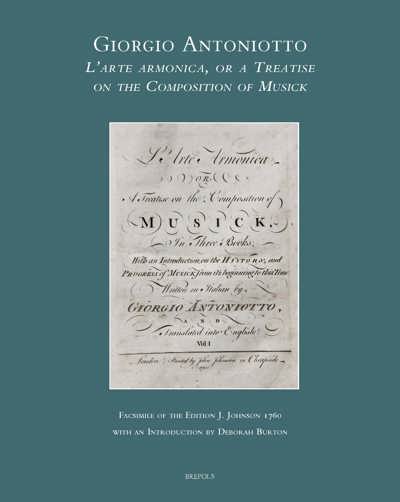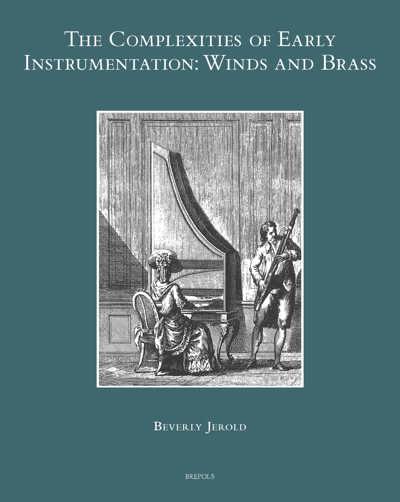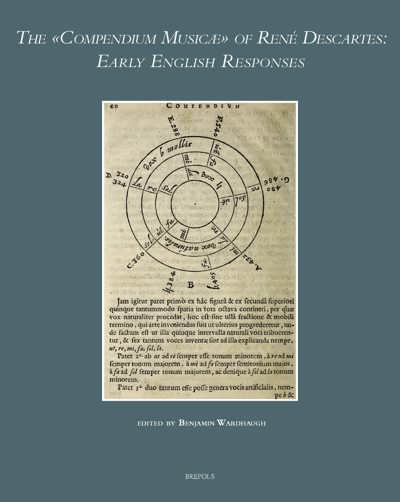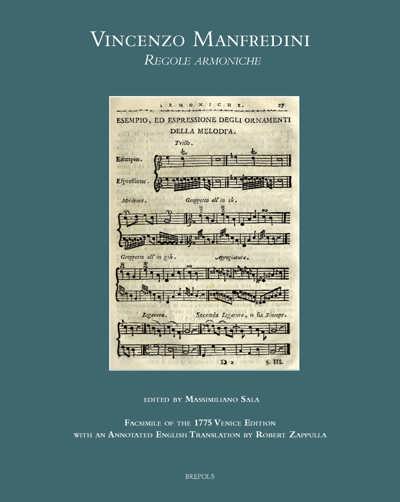
- Pages: 160 p.
- Size:210 x 270 mm
- Illustrations:58 b/w, 21 tables b/w.
- Language(s):English, French, German
- Publication Year:2015
- € 90,00 EXCL. VAT RETAIL PRICE
- ISBN: 978-2-503-56479-1
- Hardback
- Available
This book focuses on the origins of instrumentation and orchestration
Beverly Jerold's publications concerning performance and other matters in the long eighteenth century have appeared in such journals as Early Music, Eighteenth-Century Music, Dutch Journal of Music Theory, The Beethoven Journal, Ad Parnassum, Recherches sur la musique française classique, BACH: Journal of the Riemenschneider Bach Institute, Journal of Singing, The Consort, The Musical Times, The Strad, International Piano, Choral Journal, and College Music Symposium. Trained in both applied music and musicology, she is active as a performer on keyboard instruments.
When a professional orchestra today plays an eighteenth-century work with parts for wind and brass instruments, nothing seems amiss. Yet writers in the eighteenth century and beyond indicate that many notes in these scores could not be played in tune by these instruments; certain notes could be produced only with difficulty or not at all. The present work concentrates on the time period least explored in modern writings — the years before Hector Berlioz’s "Grand traité d’instrumentation et d’orchestration modernes" (1843) — and traces the development of instrumentation instruction for composers from its beginnings in the late eighteenth century, after the era of J. S. Bach and G. F. Handel. An introductory chapter includes background information on subjects related to the discussion: intonation, tuning, key action, the lack of a standard pitch level, and the difficulty of reed making. While earlier manuals supply little but the range of instruments, Valentin Roeser’s "Essai d’instruction à l’usage de ceux qui composent pour la clarinette et le cor" (1764) offers composers concrete assistance in writing for the clarinet and horn. Louis-Joseph Francoeur’s "Diapason général de tous les instrumens à vent" (1772) provides the same for all the winds and brass, as does Othon Vandenbroeck’s "Traité général de tous les instrumens à vent à l’usage des compositeurs" (c.1793). This book is not a history of instrumentation per se, but an account of technological progress and ever-increasing knowledge.
Preface
Introduction to the Wind and Brass Instruments
The Origins of Instrumentation: Rœser, Francœur and Vandenbroek
Wind and Brass Instruments: Other Manuals and Commentaries to 1820
Wind and Brass Instruments, 1820-1840
Instruments from Mid-Century onward
Mozart’s Orchestrations for Works by Handel and C. P. E. Bach
Conclusion
Appendix: Johann Sebastian Bach’s Wind and Brass Parts
Selected Bibliography
Index of Names



